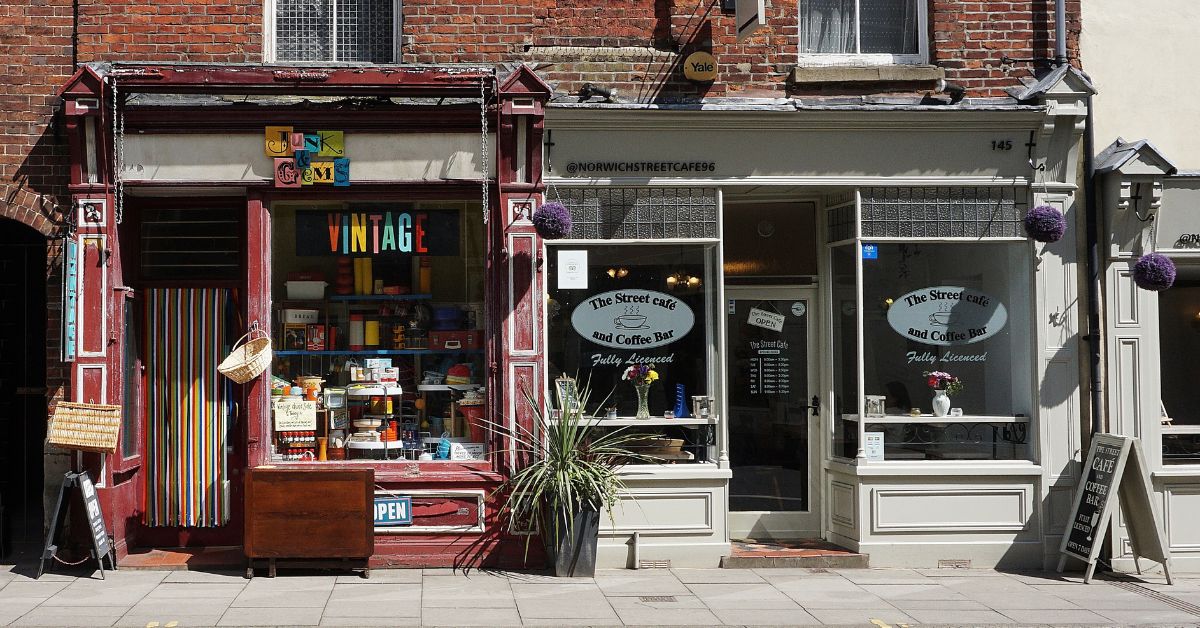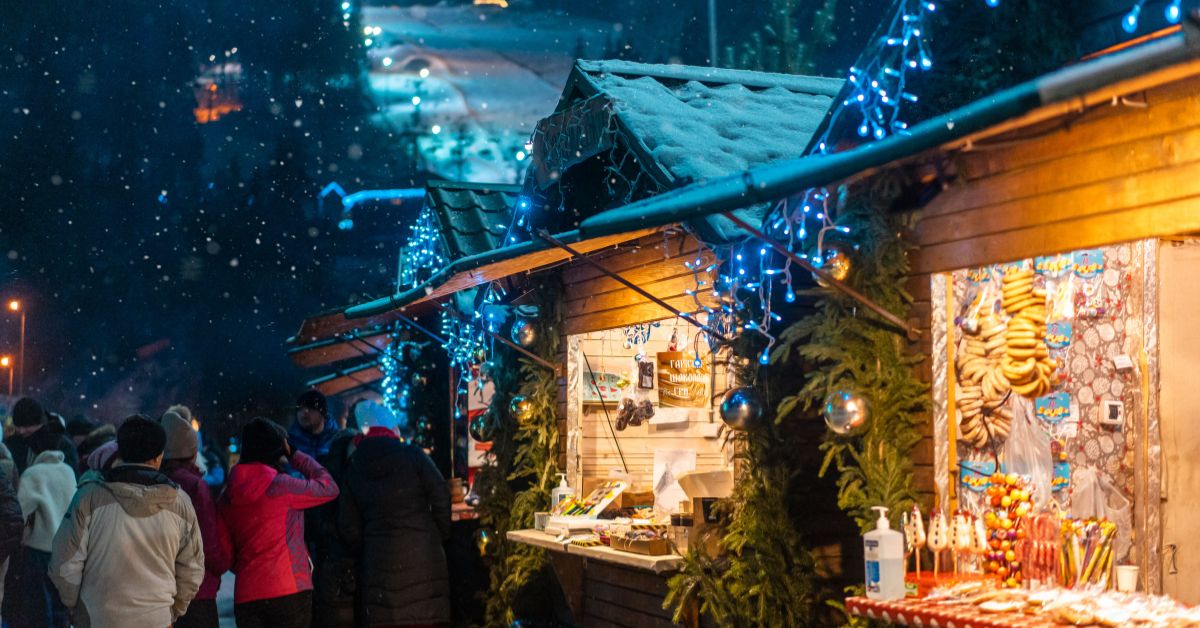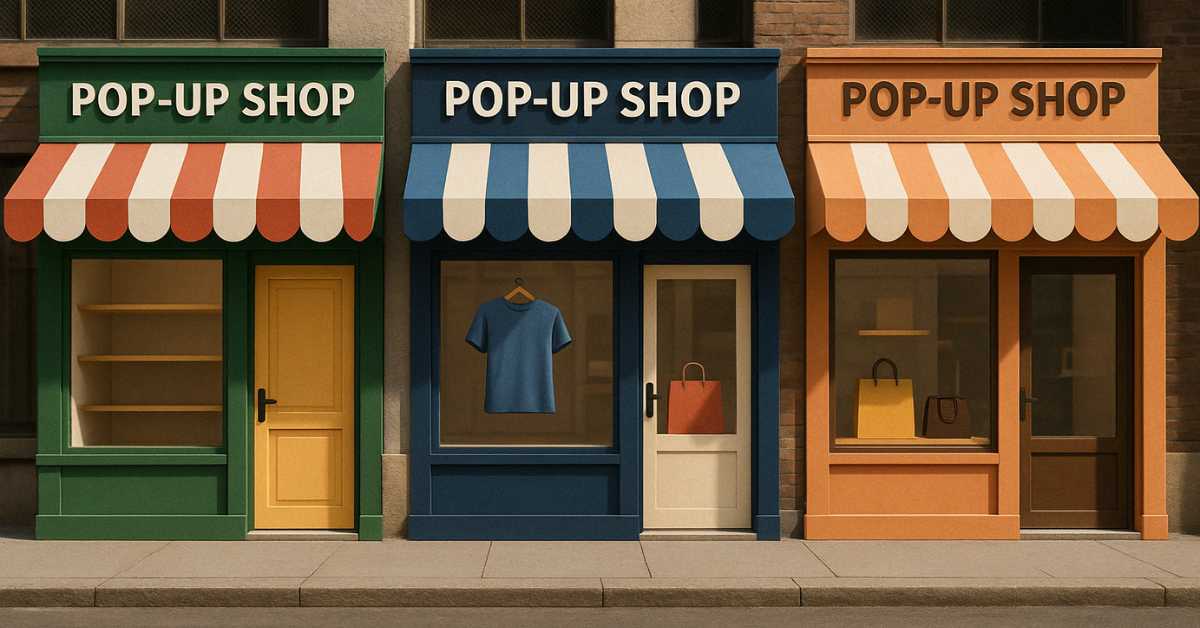Popup shops have become a significant trend in retail, offering businesses an exciting way to engage with customers, test new products, and increase brand visibility. Whether you’re a startup looking to make a splash or an established brand seeking new ways to connect with your audience, popup shops can provide the perfect solution. This comprehensive guide will cover everything you need to know about popup shops, from their benefits to how to launch a successful one.
What is a Popup Shop?
A popup shop, also known as a flash retailing space, is a temporary retail setup that businesses use to engage directly with customers for a short duration, usually ranging from a few days to a few months. These ephemeral retail spaces are strategically positioned in high-traffic locations such as vacant storefronts, shopping centers, or even mobile units like trucks and trailers. The primary objective of a popup shop is to create a unique and engaging shopping experience that attracts and captivates customers, offering them something exclusive and time-sensitive.
Origins and Evolution
The concept of popup shops is not entirely new. It can be traced back to ancient marketplaces where vendors would set up temporary stalls to sell their goods. However, the modern iteration of popup shops gained traction in the early 2000s as brands began to explore innovative ways to connect with customers. The first widely recognized popup shop was set up by the Japanese fashion brand Comme des Garçons in 2004. Since then, the phenomenon has grown exponentially, becoming a mainstream retail strategy employed by businesses of all sizes.
Key Characteristics
Popup shops are characterized by their temporary nature, flexibility, and emphasis on creating an immersive customer experience. Here are some key features that define popup shops:
- Temporary Duration: Unlike permanent retail spaces, popup shops operate for a limited time. This temporariness creates a sense of urgency and exclusivity, encouraging customers to visit and make purchases before the shop closes.
- Flexible Locations: Popup shops can be set up in various locations, including vacant storefronts, malls, outdoor markets, festivals, and even mobile units. This flexibility allows businesses to target high-traffic areas and adapt to different environments.
- Creative Concepts: Popup shops often feature creative and themed concepts that stand out from traditional retail setups. Brands use unique designs, interactive elements, and engaging activities to attract attention and enhance the shopping experience.
- Cost-Effective: Setting up a popup shop is generally more cost-effective than opening a permanent retail store. Businesses can avoid long-term leases and high overhead costs, making it an attractive option for testing new markets and products.
Benefits of Popup Shops
Popup shops have gained immense popularity in recent years, becoming a key strategy for businesses of all sizes. These temporary retail spaces offer a range of benefits that traditional brick-and-mortar stores cannot match. Whether you’re a small startup or an established brand, popup shops can provide a dynamic and flexible way to connect with your audience and achieve various business objectives. Here’s a detailed look at the benefits of popup shops.
1. Increased Brand Awareness
One of the primary advantages of popup shops is their ability to significantly boost brand awareness. Establishing a physical presence, even temporarily, can help your brand reach a broader audience and leave a lasting impression.
- Visibility in High-Traffic Areas: By setting up in high-traffic locations such as shopping centers, busy streets, or popular events, popup shops can attract a large number of potential customers who might not have been aware of your brand otherwise.
- Media Attention: The unique and often creative nature of popup shops tends to attract media coverage. Local news outlets, bloggers, and social media influencers are often keen to cover new and exciting retail experiences. This media attention can further amplify your brand’s visibility.
- Social Media Buzz: Popup shops can create a buzz on social media, especially if they feature unique themes, exclusive products, or interactive experiences. Encouraging customers to share their experiences online can lead to increased brand awareness and organic marketing.
2. Testing New Products
Popup shops provide an ideal platform for testing new products in a real-world setting without committing to a permanent retail space.
- Customer Feedback: Direct interaction with customers allows you to gather valuable feedback on new products. This feedback can help you understand what works, what doesn’t, and what improvements might be needed.
- Observing Reactions: By observing how customers interact with your products, you can gain insights into their preferences and behaviors. This can inform your product development process and marketing strategies.
- Data Collection: Popup shops enable you to collect data on sales, customer demographics, and product performance. Analyzing this data can provide a clearer picture of market demand and help you make informed decisions for future product launches.
3. Boosting Sales
The limited-time nature of popup shops creates a sense of urgency and exclusivity that can drive sales.
- Scarcity Principle: The knowledge that a popup shop is only available for a short period can prompt customers to make quicker purchase decisions. This sense of urgency can lead to increased sales during the popup’s operation.
- Exclusive Products and Promotions: Offering exclusive products or special promotions only available at the popup shop can attract customers looking for unique and limited-time offerings. This can also encourage repeat visits and word-of-mouth referrals.
- Impulse Purchases: The excitement and novelty of a popup shop can lead to impulse purchases. Customers who might not have planned to buy anything might be persuaded by the unique atmosphere and limited availability of products.
4. Engaging Customers
Popup shops provide a unique opportunity for direct, face-to-face interaction with customers, which is increasingly valuable in an era dominated by online shopping.
- Building Relationships: Personal interactions help build stronger relationships with customers. Staff can provide personalized service, answer questions, and offer recommendations, creating a more memorable shopping experience.
- Creating Experiences: Popup shops often incorporate interactive elements such as workshops, demonstrations, or live events. These experiences can engage customers on a deeper level and create positive associations with your brand.
- Customer Insights: Engaging directly with customers allows you to gain firsthand insights into their preferences, needs, and feedback. This information can be invaluable for tailoring your products and services to better meet customer expectations.
5. Flexibility and Low Commitment
Unlike traditional retail leases, popup shops offer a high degree of flexibility and lower financial risk.
- Short-Term Leases: Popup shops operate on short-term leases, which can range from a few days to several months. This allows businesses to experiment with different locations and concepts without committing to long-term contracts.
- Lower Costs: The costs associated with setting up a popup shop are typically lower than those for a permanent retail space. There’s no need for long-term leases, extensive renovations, or large-scale investments in fixtures and fittings.
- Testing Markets: Popup shops allow businesses to test new markets or locations without significant risk. By assessing the performance of a popup in a new area, businesses can determine whether there is sufficient demand to justify a more permanent presence.
- Adaptability: The temporary nature of popup shops allows for greater adaptability. Businesses can quickly pivot their strategies based on real-time feedback and performance, making adjustments as needed to optimize their offerings and customer experience.
Additional Considerations
While popup shops offer numerous benefits, there are several considerations to keep in mind to ensure their success:
- Location Selection: Choosing the right location is crucial. High-traffic areas that align with your target audience’s habits and preferences are ideal for maximizing visibility and engagement.
- Marketing and Promotion: Effective marketing and promotion are essential to drive traffic to your popup shop. Utilize a mix of online and offline channels, including social media, email marketing, local advertising, and influencer partnerships.
- Design and Experience: The design and overall experience of your popup shop should be carefully planned to create a memorable and engaging environment. This includes everything from the layout and product displays to interactive elements and customer service.
- Operational Efficiency: Managing the operations of a popup shop requires careful planning and coordination. This includes inventory management, staff training, and payment systems to ensure a smooth and seamless customer experience.
Leveraging Technology with PopupTogether
Platforms like PopupTogether can enhance the planning and execution of popup shops by providing valuable tools and insights.
- Location Matching: PopupTogether uses AI-driven algorithms to match businesses with suitable popup locations based on their brand, products, and target audience.
- Real-Time Analytics: The platform offers real-time analytics to track foot traffic, customer behavior, and sales performance. These insights can help businesses optimize their popup shops and make data-driven decisions.
- Marketing Solutions: PopupTogether provides turnkey marketing solutions, including promotional tools and custom marketing campaigns, to help businesses effectively promote their popup shops and attract visitors.
Planning Your Popup Shop
To launch a successful popup shop, careful planning is essential. Here are the key steps to consider:
Define Your Goals: Before diving into the logistics, outline what you aim to achieve with your popup shop. Common goals include increasing brand awareness, testing new products, generating sales, and engaging with customers in person. Clear goals will guide all subsequent decisions, from location selection to marketing strategies.
Identify Your Target Audience: Knowing your target audience is crucial for selecting the right location and designing an appealing popup experience. Consider demographics, shopping behaviors, and preferences. Platforms like PopupTogether offer real-time analytics to help you understand foot traffic and customer behavior, ensuring your popup is located where your target audience frequents.
Find the Perfect Location: Finding the right location is critical to the success of your popup shop. Use platforms like PopupTogether to browse available spaces, filter options based on location, size, and foot traffic data, and get matched with the most suitable spaces. Consider high-traffic areas that align with your target audience’s demographics and shopping behaviors.
Plan Your Space and Experience: The layout and overall experience of your popup shop are crucial for maximizing engagement and driving sales. Create an inviting and easy-to-navigate space, highlight key products with eye-catching displays, and incorporate interactive elements such as demonstrations, workshops, or events. Leveraging insights from platforms like PopupTogether can help you optimize your layout and displays.
Promote Your Popup Shop: Effective promotion is essential to drive traffic to your popup shop. Utilize multiple channels to reach your audience, including social media, email marketing, and local advertising. PopupTogether offers turnkey marketing solutions, including promotional tools and custom marketing campaigns, to ensure your popup gets noticed.
Managing Operations: Efficiently managing the operations of your popup shop is critical for a smooth and successful experience.
Inventory Management: Keep track of your stock levels to avoid running out of popular items. Use inventory management tools to monitor stock levels in real-time and forecast demand based on historical sales data and current trends.
Staff Training: Ensure your staff is well-trained to handle customer inquiries and provide excellent service. Training should cover customer service, product knowledge, and effective sales techniques.
Payment Systems: Set up reliable payment systems to facilitate smooth transactions. Offer multiple payment options, ensure secure transactions, and choose systems that offer fast processing to minimize wait times at checkout.
Gathering Feedback and Analyzing Performance: After your popup shop concludes, gathering feedback and analyzing performance is essential to learn and improve for future events.
Customer Feedback: Collect feedback from customers through surveys or in-person interactions. Use this feedback to understand their perceptions, preferences, and areas where you can improve.
Sales Data: Review sales data to identify top-performing products and peak shopping times. Analyze patterns in sales data to plan inventory and promotions more effectively for future events.
Foot Traffic Analysis: Use real-time analytics to assess foot traffic and customer engagement. Understand how customers navigate your space and interact with your products to refine your layout and enhance customer engagement.
Popup shops offer a dynamic and flexible way to engage with customers, test new products, and increase brand visibility. By following a structured approach and leveraging platforms like PopupTogether, you can ensure your popup shop is a success. Define your goals, understand your target audience, find the perfect location, plan an engaging space, promote effectively, manage operations efficiently, and gather feedback to continuously improve. With these steps, your popup shop will not only meet but exceed your business goals, creating lasting impressions and driving growth.




